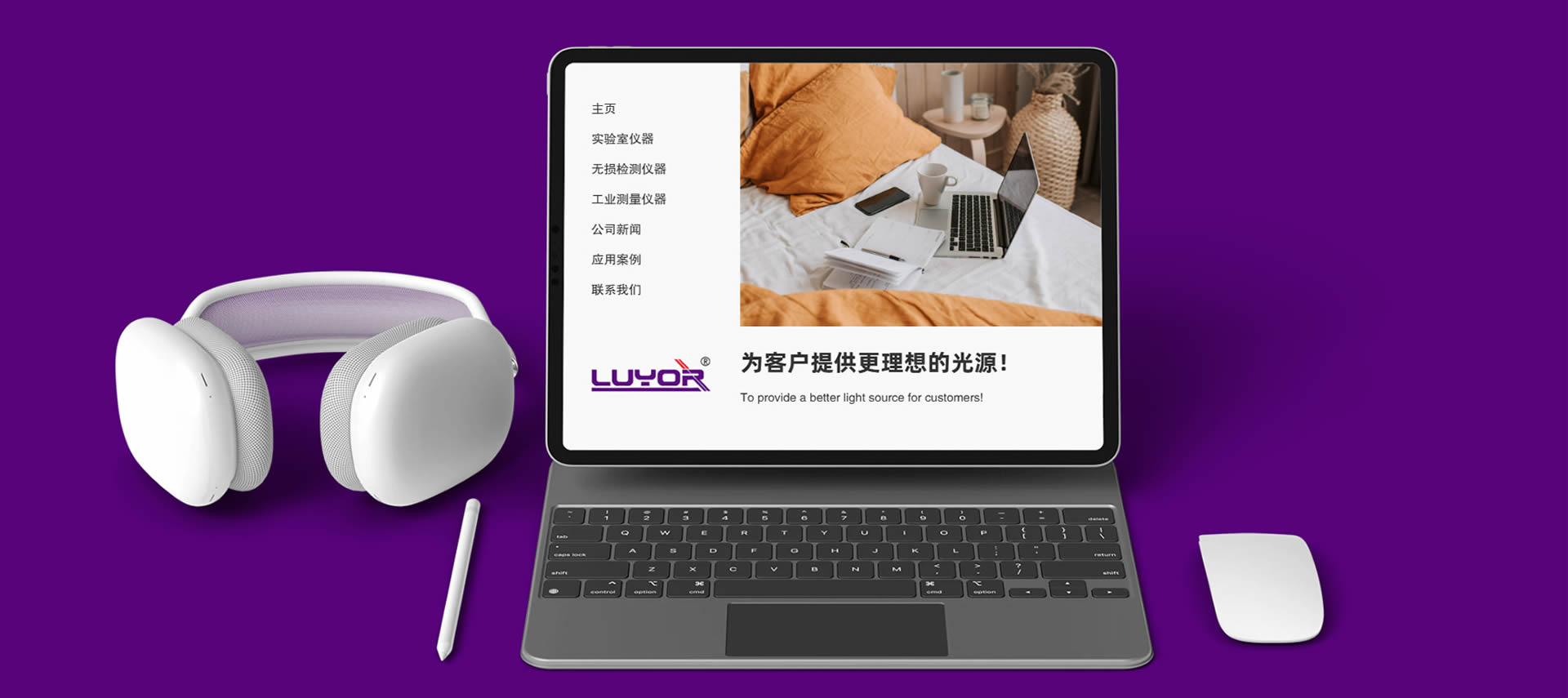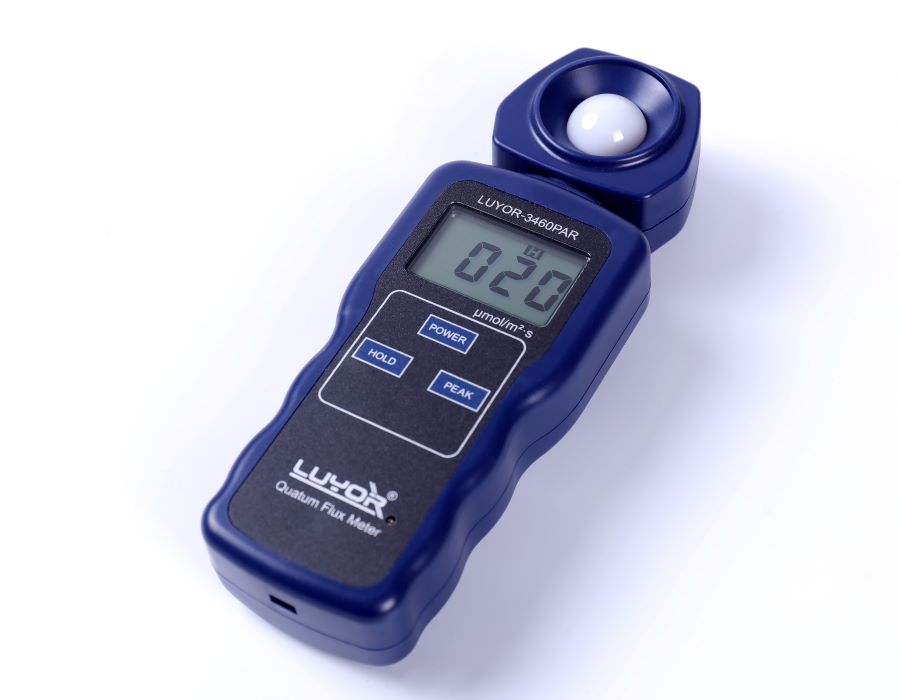光合有效辐照仪用于研究低照环境植物生长机制
鲁东大学发表文献《Short-Term Evaluation of Woodland Strawberry in Response to Melatonin Treatment under Low Light Environment》,文献中使用了LUYOR-3460PAR光合有效辐照仪用于研究植物低照环境生长机制。光合有效辐照仪LUYOR-3460PAR提供室外室内准确、连续测量。坚固的外观使得它在恶劣的天气条件和农药的喷洒下得到很好的保护。LUYOR-3460PAR是专为户外、室内安装或现场测量设计。给用户提供了良好的定向(余弦)反应,容易清洁。产品详细介绍请浏览:《光合有效辐照仪/光量子计LUYOR-3460PAR》
文献摘要:
he cultivation of strawberries in controlled environments presents challenges related to environmental stressors, especially insufficient light. Melatonin, as a widely investigated plant growth regulator, was considered as a potential candidate to mitigate damage, and enhance photosynthesis stability. However, whether melatonin can improve photosynthesis under light deficiency in woodland strawberry (Fragaria vesca) remains elusive. In this study, we evaluated gas exchange parameters, Chlorophyll fluorescence parameters, photochemical efficiency, and the related genes’ expression levels to decipher the multifaceted impact of melatonin on photosynthesis. We found concentration-dependent effects of melatonin on photosynthetic parameters, with potential benefits at lower concentration and inhibitory effects at higher concentration. Notably, melatonin increased non-photochemical quenching (NPQ), a mechanism for dissipating excess light energy, while leaving photochemical quenching (qP) relatively stable. Further analysis showed that melatonin up-regulated key xanthophyll cycle-related genes (DHAR, VDE, and PsbS), indicating its involvement in energy dissipation processes. In conclusion, our study uncovered the dual and complex role of melatonin in the short-term response of photosynthesis in woodland strawberries under low-light conditions.
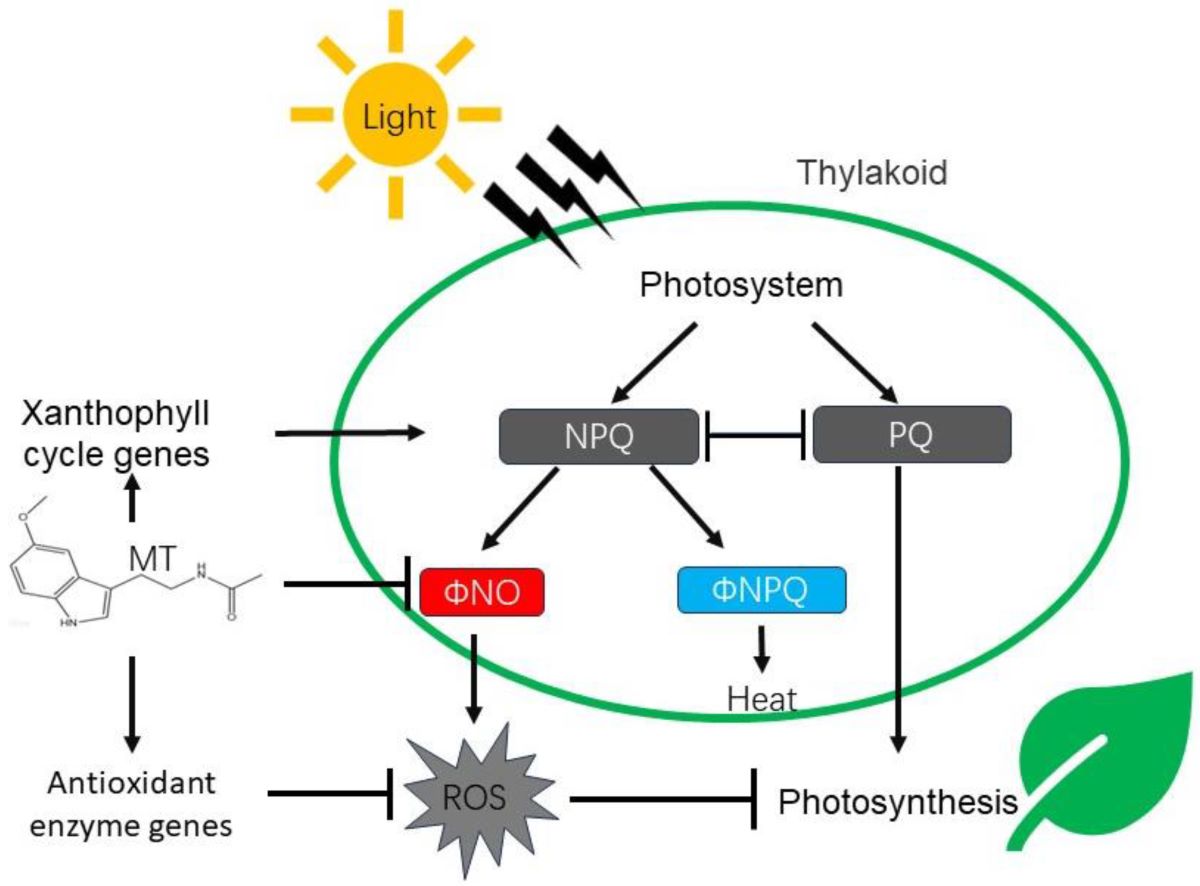
Materials and Methods
Plant Material and Treatment
The diploid woodland strawberry accession “Ruegen” was used in this study. Strawberry plants were cultivated in pots supplied with cultivation substrates (peat moss: perlite: vermiculite = 3:1:1), and watered every three days with distilled water. Plants were grown under LDs (16 h/8 h) shift at 20 ± 2 °C and 40 µmol·s−1·m2 light intensity (white light supplement by Philips 24T5 5000K 24W Fluorescent Tube). Light intensity was measured horizontally at the plant canopy by using LUYOR-3460PAR Handheld Quantum PAR Meter (LUYOR, Shanghai, China). Strawberry seedlings that are 12 weeks old and of similar size were chosen for exogenous melatonin treatments. Experimental groups were sprayed with 50, 100 and 500 µM melatonin (MT) separately. The control group was sprayed with pure water. All treatments were carried out once a day for three days. For low light treatment, similar sized 12-week-old strawberry seedlings were immediately transferred to a light-deficient chamber with 10 µmol·s−1·m2 light intensity [35,36] at 22 °C, 24 h light photoperiod, 70% humidity. Additional experimental and control groups were introduced in the same chamber supplied with 45 µmol·s−1·m2 light intensity. Strawberry leaves were collected at 0, 6, 12, and 24 h post treatment, respectively, for further experiments.
文献地址: https://doi.org/10.3390/horticulturae10020118
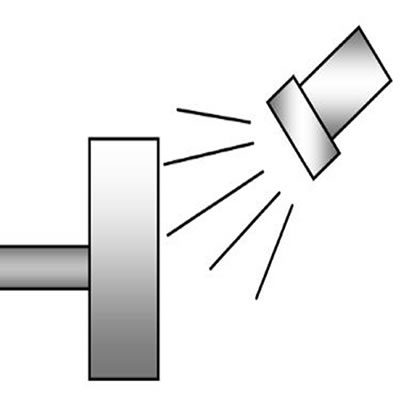 使用LED频闪仪对皮带同步进行检查
使用LED频闪仪对皮带同步进行检查
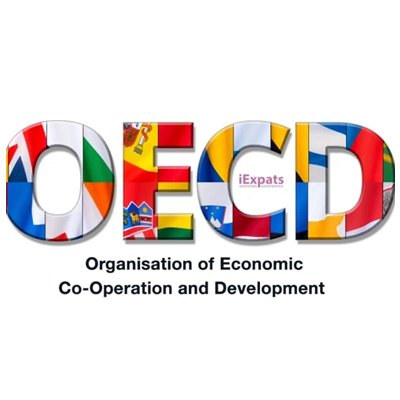 LUYOR-3450用于体外 3T3 NRU 光毒性试验
LUYOR-3450用于体外 3T3 NRU 光毒性试验
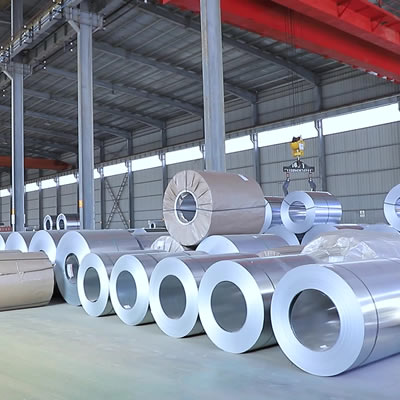 便携式频闪仪用于热轧、冷轧板、卷材等质量检测
便携式频闪仪用于热轧、冷轧板、卷材等质量检测
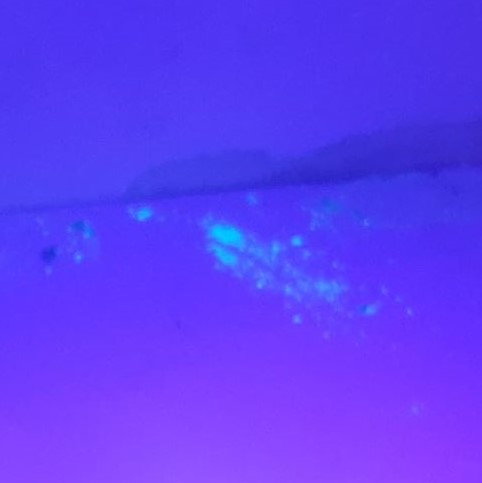 紫外线手电筒在鼠患检验中的应用
紫外线手电筒在鼠患检验中的应用

